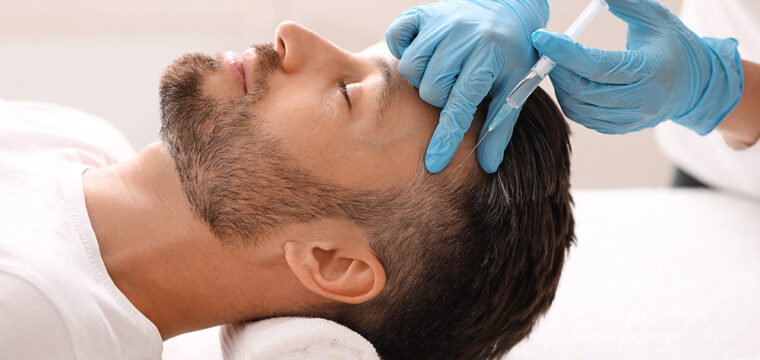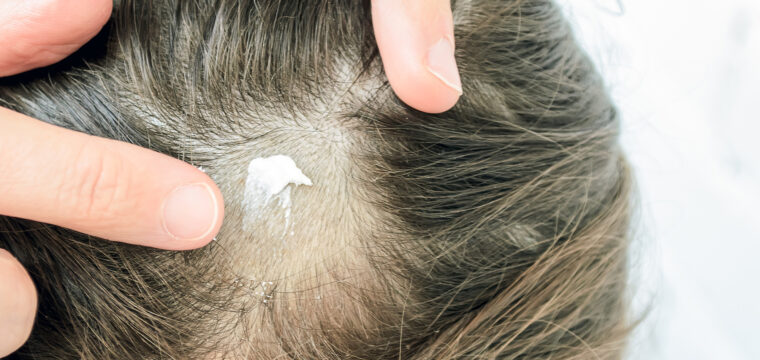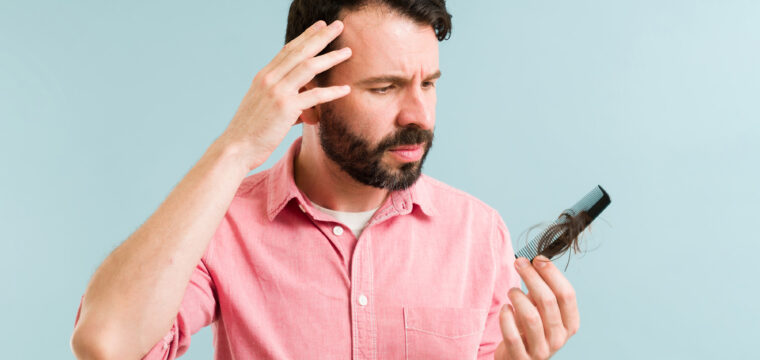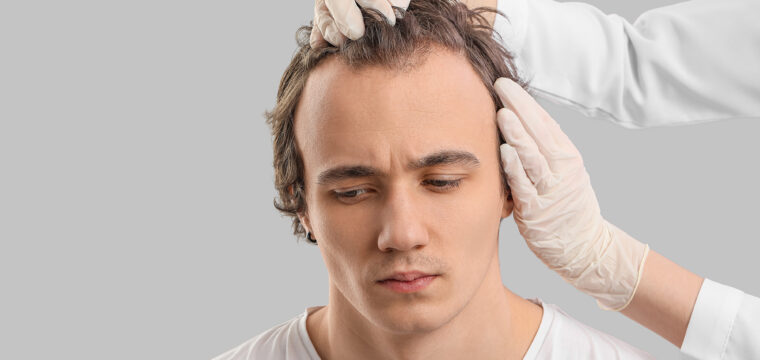Last updated on February 16, 2024
Female pattern baldness, also known as androgenetic alopecia or female pattern hair loss, affects a significant number of women but is often overlooked. To assist you, here’s a guide from qualified medical professionals on the symptoms of female pattern baldness, as well as treatment options, prevention strategies, and coping mechanisms.
What is Female Pattern Baldness?
Female pattern baldness or androgenetic alopecia is different to male pattern baldness in that the hair almost always thins across the crown and top of the scalp.
What Causes Female Pattern Hair Loss?
Genetic and hormonal factors are the most common cause of female pattern hair loss. Androgens, particularly dihydrotestosterone (DHT), shrink hair follicles and disrupt the natural hair growth cycle, leading to hair loss and androgenetic alopecia. This can be confused with telogen effluvium, which is excessive hair shedding due to stress, medications, or hormonal fluctuations, which is why a medical diagnosis is important.
Signs and Symptoms
Most hair loss is harmless but not noticeable, as people lose around 100 hairs per day. But female pattern hair loss is more severe and affects hair follicle viability, causing much more hair shedding and hair thinning. Common indicators of female pattern hair loss include thinning of hair on the crown and top of the scalp, a widening part, and increased visibility of the scalp. You may also notice your hair follicles are shrinking.
Causes and Risk Factors
- Hormones: Hormonal imbalances, especially the presence of androgens like DHT, affect hair follicle performance and contribute to female pattern baldness and androgenetic alopecia as well as telogen effluvium.
- Genetics: Genetics significantly determines the likelihood of female pattern baldness. Family history is a valuable indicator, helping women assess their risk and take proactive steps.
- Other: Age is a potential risk factor for female hair loss, as is a family history of androgenetic alopecia.
Diagnosis and Evaluation
Healthcare providers diagnose female pattern baldness through physical examination, medical history, and occasionally blood tests to assess hormonal levels. A thorough evaluation is essential to rule out other underlying medical conditions like telogen effluvium and treat hair loss.
Treatment Options for Female Pattern Hair Loss
Various treatment options are available for managing female pattern baldness and improving hair growth, including:
- Minoxidil: An over-the-counter solution promoting hair growth.
- Prescription Medications (e.g., Spironolactone, oral minoxidil, finasteride): Medications to treat female pattern baldness and stimulate hair growth.
- Platelet-Rich Plasma (PRP) Therapy: PRP therapy involves injecting the patient’s plasma to stimulate hair growth.
- Low-Level Laser Therapy (LLLT): Devices using low-level lasers to stimulate hair follicles.
- Hair Transplant Surgery: A hair transplant removes healthy hair follicles from the donor region to the areas with thinning hair, treating female hair loss.
Prevention and Lifestyle Strategies
Taking proactive steps to prevent further hair loss or manage androgenetic alopecia involves adopting healthy lifestyle practices:
- Hairstyles: Choose hairstyles that provide volume and coverage, minimising the appearance of thinning hair.
- Avoiding Tight Hairstyles: Reduce tension and breakage by avoiding tight hairstyles.
- Hair Care: Use sulphate-free shampoos and conditioners to promote overall hair health.
- Balanced Diet: Maintain a diet rich in hair-healthy nutrients, including vitamins and minerals for hair growth. Iron deficiency can also contribute to female hair loss.
- Stress Management: Incorporate stress-reducing practices and prioritise self-care to support overall well-being.
Coping with Female Pattern Baldness
Dealing with female pattern baldness or androgenetic alopecia isn’t just about physical treatments – it’s important to support emotional and psychological well-being:
- Self-Acceptance: Recognise that beauty, worth, and confidence extend beyond physical appearance.
- Emotional Support: Reach out to friends, family, or androgenetic alopecia support groups to share experiences about female pattern baldness and seek emotional support.
- Hair Replacement Options: For those desiring additional coverage, explore options like wigs or hairpieces, or consult a medical professional for hair transplant or hair growth treatments.
Seeking Professional Help for Female Pattern Hair Loss
Always consult a qualified and experienced healthcare provider for a proper diagnosis and personalised treatment plan for hair loss or androgenetic alopecia. Remember that early intervention is key to achieving optimal results in managing female pattern baldness.
By understanding female pattern baldness, you can make informed decisions about your hair health. Remember, before committing to any hair loss treatment, whether it is medications, hair growth therapy , or hair transplant therapy, it’s best to consult medical professionals. For more advice, speak to the qualified medical professionals at Hair Doctors in Sydney for personalised treatment for female pattern hair loss and androgenetic alopecia.
FAQs
What is female pattern hair loss?
Female pattern hair loss, or androgenetic alopecia, is a common form of hair thinning in women characterised by a reduced hair density on the crown and top of the scalp.
Can you prevent female pattern baldness?
Like male pattern hair loss, female pattern hair loss can often be managed and slowed down with various treatments, but a complete restoration is not always guaranteed. Seeking professional advice for personalised solutions is recommended.
Why does female pattern hair loss occur?
Female pattern hair loss occurs due to a combination of genetic and hormonal factors, primarily influenced by androgens like dihydrotestosterone (DHT). This leads to the miniaturisation of hair follicles and gradually thinning hair.
Which vitamin deficiency causes hair loss?
Vitamin deficiency, particularly in vitamins such as biotin, vitamin D, and iron deficiency, can contribute to hair loss.
Can hair grow back from female pattern baldness?
Like male pattern hair loss, hair regrowth from female pattern baldness is possible with certain treatments, but results vary among individuals. Consulting a healthcare professional for personalised advice is recommended.
At what age does female pattern baldness start?
Like male pattern baldness, female pattern baldness can begin at any age, but it often becomes more noticeable after menopause, depending on genetics and hormonal changes.















